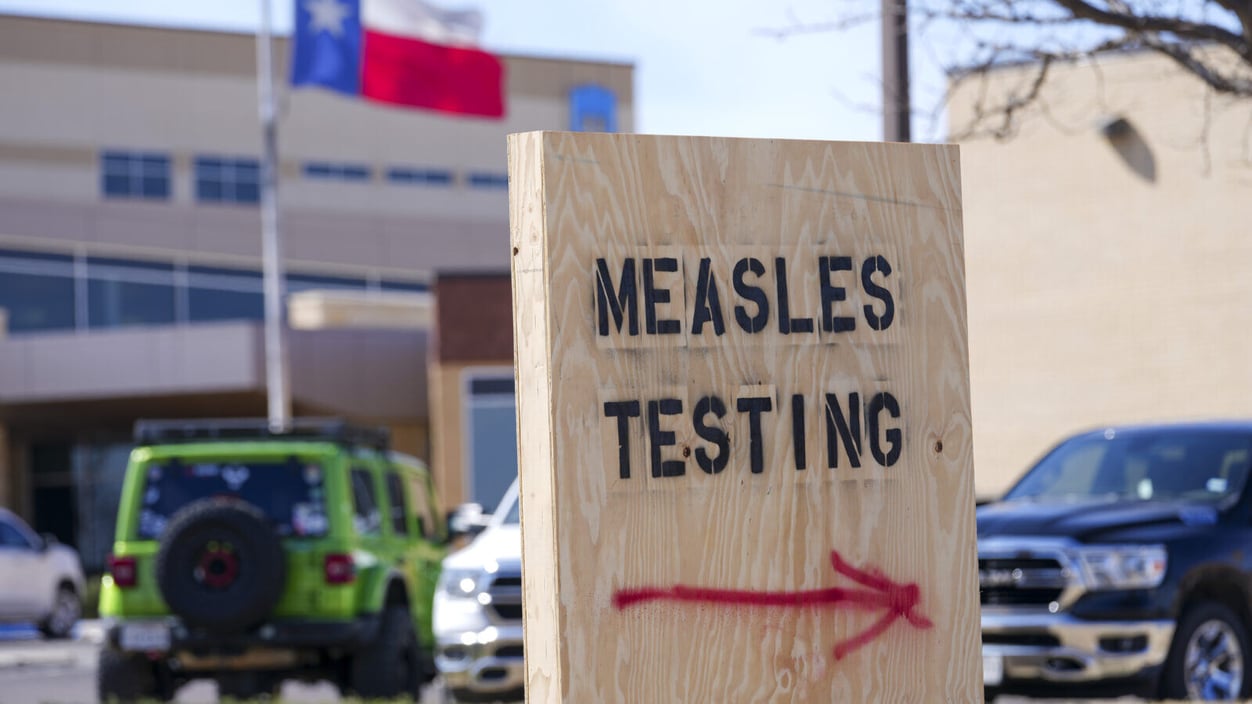public health
Where the U.S. is headed after a second child died from measles

Julio Cortez/AP
A second unvaccinated child has died from measles in West Texas. She was 8 years old, and previously healthy. On Sunday, after news of her death, health secretary Robert F. Kennedy Jr. wrote in a post on X that "the most effective way to prevent the spread of measles is the MMR vaccine." It's his most direct statement yet on the issue, after saying less than a month ago — against current evidence — that the measles shot caused deaths every year.
The child's death represents a tragedy that experts worry is about to become a lot less rare, STAT's Helen Branswell reports. "With two, maybe three deaths already, I don't think it's implausible that we'll see more," said Caitlin Rivers, an infectious diseases epidemiologist. Peter Marks, the recently ousted top vaccines regulator at the FDA, said it a little differently.
"Unless we dramatically change course, drastically change course, it's going to be a problem," he told Helen. "This is what measles does." Read more from Helen about the challenges ahead.
politics
Gonorrhea, HIV, asthma, and lead poisoning
STAT reporters have dug deep over the last week into all the different ways that disease prevention and management are already being affected by President Trump's massive cuts to staff and funding. Here's the latest:
At the CDC's STD lab, all 28 full-time employees were fired last week, Helen reports. The shuttering of the premiere facility comes at a time when the whole world is down to one single drug that can reliably cure gonorrhea, leaving experts fearful about what lies ahead. (The disease has developed resistance to nearly all antibiotics used against it, and it appears possible that even the last one standing could soon be conquered). Read more from Helen on the consequences, and what explanation HHS gave for the decision.
Myriad HIV prevention efforts have also been hamstrung, STAT's Jason Mast reports. Last week's cuts gutted CDC branches responsible for a national at-home testing program, long-running surveys, statistical analysis, and guidance. Funds have been suspended for the two most prominent networks for testing prevention drugs and vaccines, Jason also learned. The exact toll to date is difficult to quantify. Still, "what we're seeing can only be summarized by the words chaos and terror," said Colleen Kelley, chair of the HIV Medicine Association. Read more.
But it's not just infectious disease being targeted. According to an internal CDC document shared with STAT's Eric Boodman, the agency's Division of Environmental Health Science and Practice was "to be eliminated in its entirety." With the possible exception of commissioned public health officers, every single employee, including the director, was placed on leave last week. These are the people who answer questions about asthma after hurricanes run through communities, leaving behind sodden furniture and moldy debris. They're also the people who would respond in the case of a radiation emergency. They're the ones who were in the midst of helping to deal with an ongoing lead-exposure crisis in Milwaukee schools. Read more from Eric about what happens without the division.
mental health
A therapeutic safety net for federal workers
If you've ever experienced layoffs at your job, you know how stressful they can be, even under normal circumstances. But since Trump's inauguration, federal workers have experienced "one fire after another after another," as one employee put it to STAT's Liz Cooney. "There's really not been any reprieve since January 20," they added.
A cadre of psychologists from outside the government saw what was happening, and have signed up to provide therapy to federal workers for low or no fees — a sort of therapeutic safety net. A list of therapists is available on what its creator calls an underground network, which federal workers can contact through employee assistance programs or other internal resources.
"I just want to show the world, and people who are in this vulnerable time, that there's still compassion out there despite the rhetoric, despite the suffering," said Gerald Joseph, a clinician who has offered to help people dealing with the cuts. Read more.


No comments